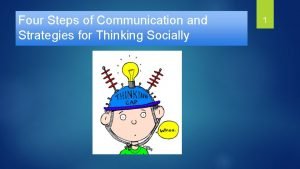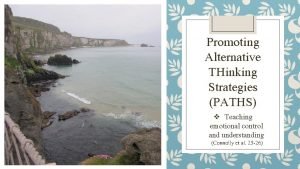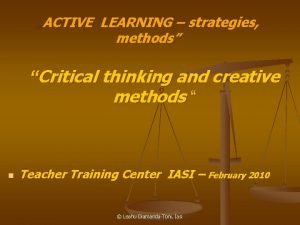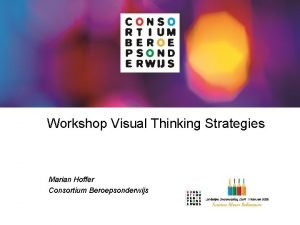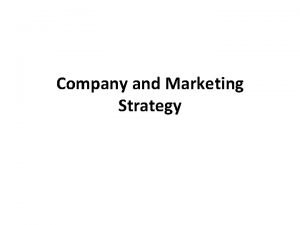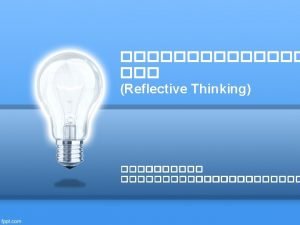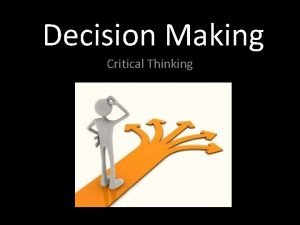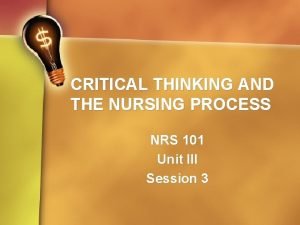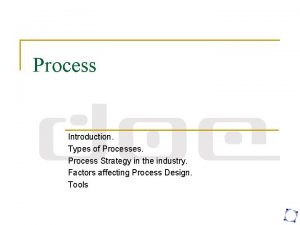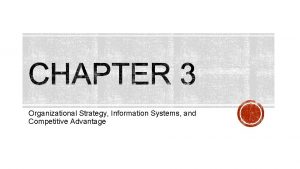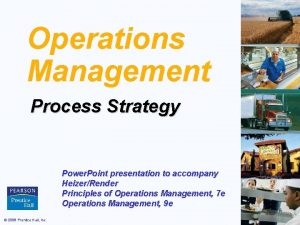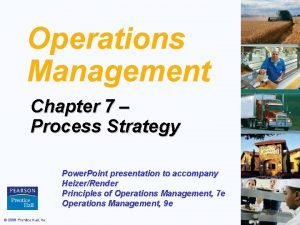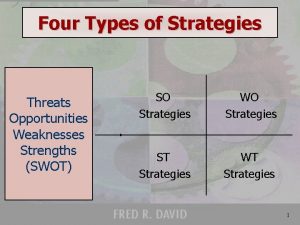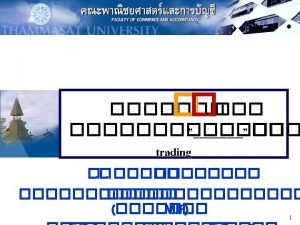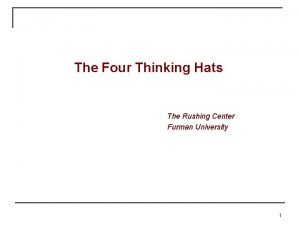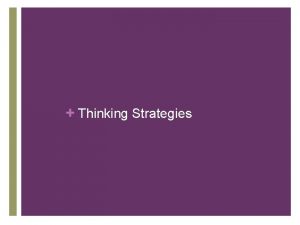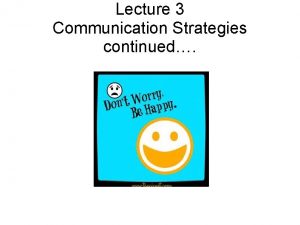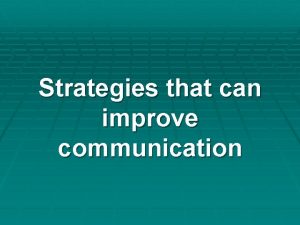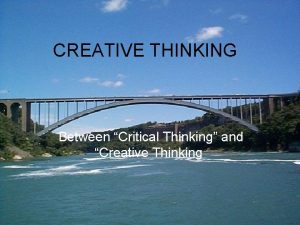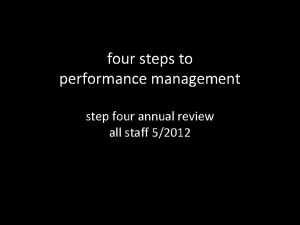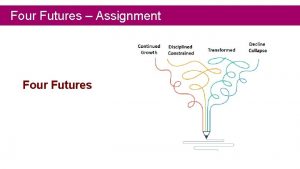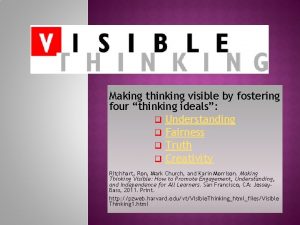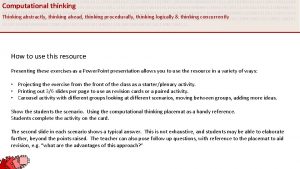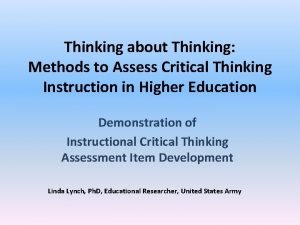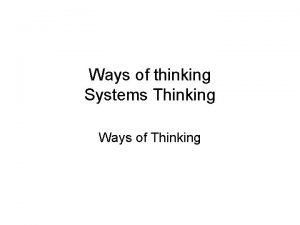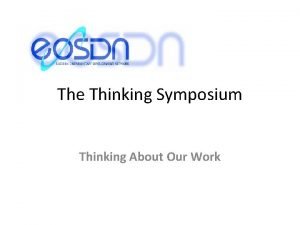Four Steps of Communication and Strategies for Thinking

































- Slides: 33

Four Steps of Communication and Strategies for Thinking Socially 1

Today’s Objective To identify the four steps of communication, to develop common social vocabulary, and to provide effective steps that can be used within the classroom setting. 3. What are some effective social skills strategies that I can use with my student(s)? 1. What are the stages of social interaction? 2. What are the 4 steps of communication? 2

Overview of the Day Ice breaker activity Define social skills and levels of play/interaction What is the hidden curriculum? Outline the four steps of communication Introduce some social thinking vocabulary Quiz Time Assess need and identify deficit Strategies for implementing social skill development Your homework assignment 3

ICE BREAKER ACTIVITY WEB GAME Form a circle in the middle of the room 4

Defining Social Skills In small groups, what words would you use to describe an individual with strong social skills How do you think they learned these skills? Can “good” social skills be taught? 5

Social Skills are… 6 components of behavior that help an individual understand adapt across a variety of social settings (Steedly et al. , 2011) …the abilities necessary to get along with others and to create and maintain satisfying relationships (Kennedy-Moore, 2011) …about being able to flexibly adjust our behavior to fit a particular situation and our personal needs and desires …also defined as recognizing and managing our emotions, developing caring and concern for others, establishing positive relationships, making responsible decisions, and handling challenging situations constructively and ethically (as cited in Steedly et al. 2011)

Social Interactions: 6 levels of play Ø As children develop, they move from individual to group play Ø Type of play varies day to day and situation to situation depending on how the child is feeling that day or what their preferences are that day. 7 Six Levels of Play 1. Unoccupied play: the child is relatively stationary and appears to be performing random movements with no apparent purpose. A relatively infrequent style of play. 2. Solitary play: the child is completely engrossed in playing and does not seem to notice other children.

Social Interactions: 6 levels of play 8 3. Onlooker play: child takes an interest in other children’s play but does not join in. May ask questions or just talk to other children, but the main activity is simply to watch. 4. (2 -3 years) Parallel play: the child mimics other children’s play but doesn’t actively engage with them. For example they may use the same toy. 5. Associative play: more interested in each other than the toys they are using. Develop friendships and preferences for playing with some and not others. 6. Cooperative play: some organization enters children’s play, for example the playing has some goal and/or rules and children often adopt roles and act as a group. (Research by Mildred Parten in 1920 s, Institute of Child Development, Minnesota)

The Hidden Curriculum 9 A term used to describe a set of rules or guidelines that are assumed by the general population and not directly taught They are social or subtle cues that we acquire through observation over time. It enables us to read body language, understand idioms, slang words, humour etc. It differs across genders, age groups, and cultures (Smith-Myles & Simpson, 2001)

Individuals with social communication challenges Might lack the ability to intuitively interpret what others are thinking, saying, or intending Aren’t able to regulate their own behaviour to other people’s thoughts or expectations. (example: Blurting out, volume/tone, staying on topic, laughing out of turn, being out of sync with the rest of the group) Following the unwritten or hidden rules of the environment , even outside of active social interactions (example: stepping aside when someone gets on the elevator, sitting quietly in class while teacher talks even when you want to say something) 10

4 Steps of Communication: 1. Using your BRAIN to think about others 11

How well did Garfield do in this first exercise of using his brain to think of others? In groups, brainstorm ways he could begin to demonstrate that he is actually thinking about Jon. 12

Questions Garfield Should Ask Himself 1. Do I know what interests them? 2. Do I know what they are feeling with what I’m saying? 3. When they are talking, what am I doing to show them I’m interested? 13

4 Steps of Communication: 14 2. Using your EYES to make connections minute on her eyes. thinking? Feeling? Focus for a What is she Seeing?

WHY IS EYE CONTACT SO IMPORTANT? A. The direction of where our eyes and other peoples eyes are looking, shows us what everyone might be thinking about. Example: Looking down at video game and saying, “I went cherry picking!” (Minecraft lingo) B. It helps us figure out what people are feeling, thinking, and what they might be interested in. Example: Someone keeps looking at the clock (Bored? Late? Waiting for something? ) 15

4 Steps of Communication: 3. Using your BODY to make connections What does your body tell others? A. Your body position shows us who you want to talk to or not talk to B. Your movements tell us what you might do next (even unintentionally) C. Your body language, gestures, and facial expression tell us how you might feel about a topic or people around you 16

Describe Dilbert’s Dilemma In terms of his body language, how did he react to the situation? 17

Class Activity In pairs, create a skit without using words. Consider the direction of your body position, body movements/gestures, and facial expressions. A few will be performed in front of the class. The class will use clues to understand what the skit is about. 18

4 Steps of Communication: 4. Using your WORDS to make connections How do we do this? A. By talking about other people’s interests B. By asking questions to find out their interests and make comments to show interest C. By adding our own experience to other people’s experiences D. By adjusting our language to fit with the conversation 19

A Question for the Class If we are to successfully connect with others through language what personal qualities should we possess? Write down your answers in your worksheet and share as a class. 20

Ideas for Social Thinking Vocabulary 21 Expected Behaviour Unexpected Behaviour Whole Body Listening Is your body in the group? Hidden rules that we must learn. Rules of what is expected changes based on where we are and who we are with When we behave in a way that gives people weird or uncomfortable thoughts about us Using your BODY to show you are connecting with the group

Ideas for Social Thinking Vocabulary Flexible Brain Opposite of rigid brain where we follow the rules ALL the time instead of interpreting subtle different meanings in language or expression eg. Humour or being ok with different points of view 22 Whopping Topic Change Thinking with your Eyes When I interject in a conversation with a topic I am interested in but one that isn’t being discussed Am I using my eyes to figure out my environment and what others might be thinking? I can use this information to adapt my thinking, words, and behavior.

Ideas for Social Thinking Vocabulary 23 Smart Guess vs. Wacky Guess People Files Social Fake When I guess what others are saying, is it on topic or is it a random guess that does not consider what we know or see? How we relate to others based on what we know of them Showing interest in what other people are saying even when you are not interested

Quiz Time 24 Watch the following clip What social thinking vocabulary words might you consider using with Sheldon to help him become a better social thinker? URL: https: //www. youtube. com/watch? v=1 me. NHRl. GEe. M

Steps in Supporting Social Skill Development Step 1: Assess Checklist resources from: üScott Bellini- Building Social Relationships üKathleen Observe 25 Ann Quill-Do-Watch-Listen-Say in natural setting Assess across settings (home, classroom, playground) and times of day If possible, collect data from a variety of individuals (teachers, support staff, parents)

Step 2: Identify the Nature of their Deficit Acquisition- lacks the knowledge • E. g. . Blurts out the answer in class because they do not know the rule is to raise your hand wait for the teacher to acknowledge you. • Use DIRECT instruction (model behavior, role-play, provide direct and positive feedback) Performance- knows how but fails to do it consistently • E. g. . understands that they must raise hand to speak but sometimes blurts out in class. • Use VISUALS/PROMPTS and reinforcement to increase their performance Motivational- knows how, but is not motivated • Correct student BEFORE they make an error and use contingency management Discrimination - skill learned but has not figured out when to use it. • Needs to know WHEN and HOW to use the skill • Encourage rehearsing, practicing, and varying your reward 26

Step 3: Implement Skill Development: 4 Steps 1. Model and Rehearse 2. Coach and Practice 3. Reflect and Analyze 4. Maintain and Generalize 27

1. Model and Rehearse Through: Direct Writing Role 28 Instruction up scripts or social stories for the students to read modeling and using “real life situations” Videotaping appropriate models and discussing 4 areas of communication afterwards Use social thinking vocabulary to discuss the rules of the hidden curriculum Using IPad apps and playing with different facial expressions

2. Coach and Practice 29 every day in a variety of settings for short periods of time Consider play groups or 1: 1 structured play opportunities Always work towards fading adult prompt (i. e. hand under hand, verbal, gestural, visual, in the room but maybe supporting another student) Provide Break lots of praise and rewards and choice activity afterwards as it can be exhausting for them Consider peer models or mentors

3. Reflect and Analyze Review 30 situations where learner misread a cue Use mind maps, behavior maps, or comic strips to break down and make sense of the situation Create a script for problem solving Reinforcements Do for hard work and solving a problem not overanalyze. The aim is to get them to think about it and continue to motivate them to keep wanting to learn. Consider focusing on ONE aspect.

4. Maintain and Generalize Communicate learner’s progress with parents, staff so that the skill may be generalized across situations • Include: a) Strategies used b) Social thinking vocabulary learned c) Hidden rules understood or working on d) Always provide rewards for being able to problem solve effectively across situations 31

Think of a Student or Try for Next Time 1. 2. 3. 4. 32 Think of a student What social skill might you want them to work on? (4 steps of communication) Consider their personality and interests, how might you introduce the social skill to be learned? (Model and Rehearse) What social thinking vocabulary might be used to help the learner understand the hidden rules?

References Slide 4 Knox, G. Retrieved October 10 th, 2014, from http: //insight. typepad. co. uk/40_icebreakers_for_small_groups. pdf 33 Slide 6 Steedly, K. M. , Schwartz, A. , Levin, M. , & Luke, S. D. (2008). Social skills and academic achievement. Evidence for Education 3(2). Retrieved October 1 st , 2014, from http: //www. parentcenterhub. org/repository/social-skills/ Kennedy-Moore, E. (2011). Growing friendships: All about children’s social and emotional development. Psychology Today. Retrieved September 27 th 2014, from http: //www. psychologytoday. com/blog/growing-friendships/201108/what-are-social-skills Slide 7 -8: Dean, J. (2008). 6 types of play: how we learn to work together. Retrieved October 1 st, 2014 from http: //www. spring. org. uk/2008/07/6 -types-of-play-how-we-learn-to-work. php Child Development Institute: Forms of play. Retrieved, September 15 th, 2014, from http: //childdevelopmentinfo. com/child-development/play-work-of-children/pl 3/ Slides 9 -10: Smyth-Miles, B. (2004). The Hidden Curriculum. Kansas: Autism Asperger Publishing Company. Retrieved September 15 th, 2014, from https: //www. erinoakkids. ca/Erinoak. Kids/media/EOK_Documents/Autism_Resources/Hidden-Curriculum. pdf Smyth-Miles, B. , & Simpson, R. L. (2001). Understanding the hidden curriculum: An essential social for children with autism and Asperger syndrome. Intervention in School and Clinic 35(5) 278 -286. Retrieved Sept 20 th, 2014, from http: //isc. sagepub. com/content/36/5/279. short Slides 11 -23: Garcia Winner, M. (2011). Social thinking worksheets for tweens and teens: Learning to read in between the social lines. Thinking Social Publishing: San Jose, California. Slide 25: Bellini, S. (2006). Building Social Relationships: A systematic approach to teaching social interaction skills to children and adolescents with autism spectrum disorders and other social difficulties. Autism Asperger Publishing: KS, USA. Slides 28 -31: Adapted from Leslie Burgess Social Skills Instruction for students with ASD (June 2008). POPARD Workshop.
 Smart guess wacky guess activity
Smart guess wacky guess activity Active learning strategies to promote critical thinking
Active learning strategies to promote critical thinking Promoting alternative thinking strategies
Promoting alternative thinking strategies Active learning strategies to promote critical thinking
Active learning strategies to promote critical thinking Workshop visual thinking
Workshop visual thinking Positive thinking vs negative thinking examples
Positive thinking vs negative thinking examples Thinking about your own thinking
Thinking about your own thinking Holistic judgement
Holistic judgement Perbedaan critical thinking dan creative thinking
Perbedaan critical thinking dan creative thinking Thinking about you thinking about me
Thinking about you thinking about me What is an axial movement
What is an axial movement Company wide strategic planning examples
Company wide strategic planning examples Six phases of reflective inquiry
Six phases of reflective inquiry Portable heating unit on the moon
Portable heating unit on the moon Critical thinking and the nursing process
Critical thinking and the nursing process Four improvement strategies in tqm
Four improvement strategies in tqm Yamazumi
Yamazumi What are porter's four competitive strategies?
What are porter's four competitive strategies? Repetitive focus strategy
Repetitive focus strategy Customer-driving marketing
Customer-driving marketing Process strategy operations management
Process strategy operations management For weakness
For weakness Operations strategy in a global environment
Operations strategy in a global environment Four basic strategies
Four basic strategies Process strategy in operations management
Process strategy in operations management 4 straight sides
4 straight sides Four thinking hats
Four thinking hats Fspos
Fspos Typiska novell drag
Typiska novell drag Tack för att ni lyssnade bild
Tack för att ni lyssnade bild Ekologiskt fotavtryck
Ekologiskt fotavtryck Varför kallas perioden 1918-1939 för mellankrigstiden?
Varför kallas perioden 1918-1939 för mellankrigstiden? En lathund för arbete med kontinuitetshantering
En lathund för arbete med kontinuitetshantering Underlag för särskild löneskatt på pensionskostnader
Underlag för särskild löneskatt på pensionskostnader
